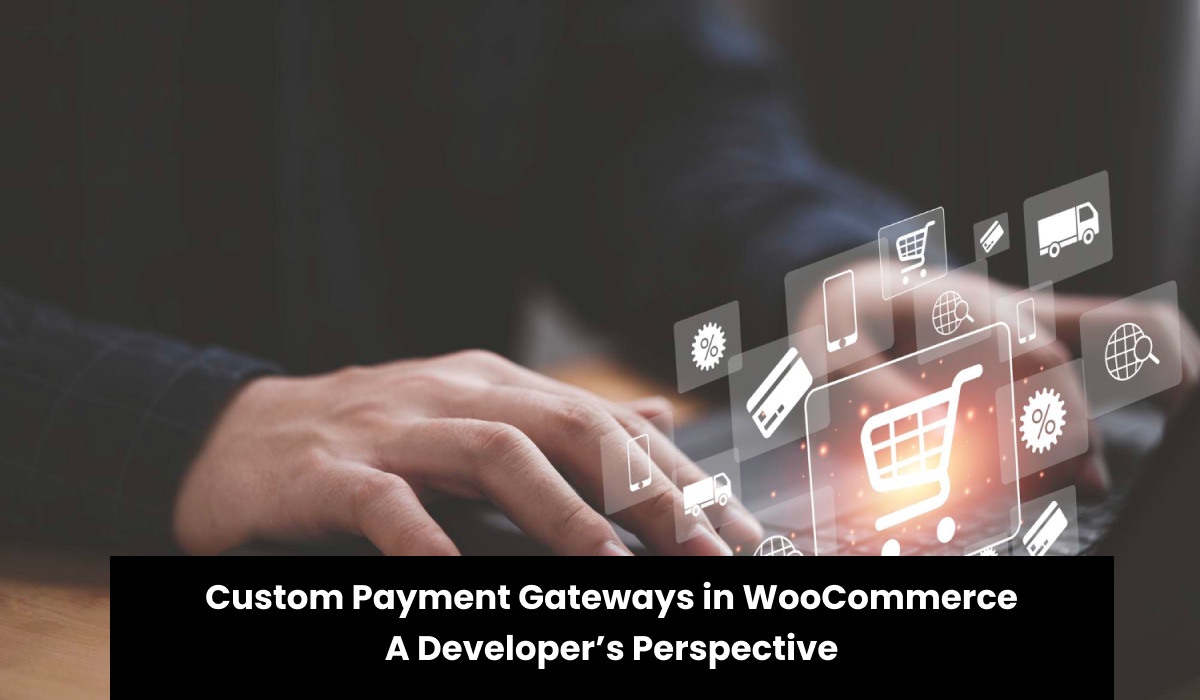WooCommerce, the versatile e-commerce plugin for WordPress, empowers countless online businesses with its flexibility and extensive features. Among the crucial components that contribute to a successful e-commerce venture is the payment gateway. While WooCommerce comes equipped with popular payment gateways, there are instances where businesses require a tailor-made solution to meet specific needs.
In this blog post, WooCommerce developers at Webomindapps Toronto explore the intricacies of custom payment gateways in WooCommerce from a developer's perspective, shedding light on the benefits, challenges, and best practices in creating a seamless transaction experience.
The Need for Custom Payment Gateways:
WooCommerce, by default, integrates with popular payment gateways such as PayPal, Stripe, and others. However, businesses often encounter scenarios where they operate in niche markets, have unique requirements, or wish to integrate with a regional or industry-specific payment provider that isn’t covered by the default options. This is where the need for custom payment gateways arises.
Benefits of Custom Payment Gateways:
1. Tailored Solutions: Custom payment gateways allow developers to tailor the integration to the specific needs of a business. This flexibility ensures that the payment process aligns seamlessly with the business model and customer expectations.
2. Enhanced User Experience: A custom payment gateway enables developers to design a user interface that mirrors the branding and user experience of the online store. This not only fosters trust but also contributes to a cohesive and engaging customer journey.
3. Integration with Local Providers: For businesses operating in specific regions, custom payment gateways facilitate integration with local payment providers that might not be covered by the default WooCommerce options. This is particularly advantageous for expanding into new markets.
4. Regulatory Compliance: Different regions have varying regulations regarding online transactions. Custom payment gateways empower developers to ensure that the payment processes adhere to local and international compliance standards, safeguarding both the business and its customers.
Challenges in Implementing Custom Payment Gateways:
While the benefits are compelling, the process of implementing custom payment gateways in WooCommerce comes with its set of challenges.
1. Security Concerns: Security is paramount in online transactions. Custom payment gateways must adhere to industry standards and best practices to ensure the secure transfer of sensitive financial information.
2. Compatibility and Updates: WooCommerce, as a dynamic platform, undergoes regular updates. Developers must ensure that custom payment gateways remain compatible with the latest versions of WooCommerce to prevent disruptions in the payment process.
3. Testing and Debugging: Rigorous testing is crucial to identify and rectify potential issues. Developers must test custom payment gateways thoroughly across various scenarios to ensure reliability and error-free transactions.
4. User Experience Optimization: Crafting an intuitive and user-friendly interface requires careful consideration of design and functionality. Developers must prioritize user experience to ensure that customers navigate through the payment process seamlessly.
Best Practices for Developing Custom Payment Gateways:
1. Thorough Documentation: Create comprehensive documentation for the custom payment gateway. This not only assists developers in understanding the integration but also facilitates smoother troubleshooting and maintenance.
2. Adherence to Standards: Follow industry standards and guidelines, especially concerning security and compliance. Ensure that the custom payment gateway aligns with Payment Card Industry Data Security Standard (PCI DSS) requirements and other relevant regulations.
3. Error Handling and Logging: Implement robust error handling mechanisms and logging systems. This aids in identifying and addressing issues promptly, minimizing disruptions in the payment process.
4. Regular Updates: Stay vigilant about WooCommerce updates and ensure that the custom payment gateway is compatible with the latest versions. Regular updates not only enhance functionality but also address any security vulnerabilities.
5. User Testing: Conduct thorough user testing to gauge the effectiveness and user-friendliness of the custom payment gateway. Gather feedback from real users to identify any pain points and make necessary adjustments.
Developing a Custom Payment Gateway in WooCommerce: A Step-by-Step Guide:
1. Define Requirements: Clearly outline the specific requirements of the custom payment gateway, considering factors such as transaction types, currencies, and any unique features required.
2. Create the Gateway Class: Develop a custom class for the payment gateway by extending the WooCommerce payment gateway class. This class will define the basic structure and functionality of the custom payment gateway.
3. Implement Payment Processing: Integrate the custom payment gateway with the payment processing API or provider. Implement the necessary functions to handle the initiation, processing, and confirmation of payments.
4. Configure Settings: Create an intuitive settings panel within the WooCommerce settings page to allow users to configure the custom payment gateway according to their requirements. This might include API keys, credentials, and other parameters.
5. Handle Responses: Develop functions to handle various responses from the payment provider, including successful payments, failed transactions, and any other status updates. Implement robust error-handling mechanisms.
6. Test Thoroughly: Test the custom payment gateway rigorously in a staging environment, replicating various scenarios to ensure reliability and compatibility. Address any issues identified during testing.
7. Document the Integration: Create detailed documentation for developers and users. This documentation should cover the installation process, configuration options, and troubleshooting steps, providing a comprehensive guide for anyone working with the custom payment gateway.
Conclusion
Developing custom payment gateways for WooCommerce is a complex but rewarding endeavor. By embracing this customization, businesses can offer a seamless and personalized transaction shopping experience that aligns with their unique needs and goals. With a meticulous approach to development, adherence to industry standards, and ongoing maintenance, developers can create custom payment gateways that meet today's demands and pave the way for future growth and innovation in e-commerce.


No comments yet